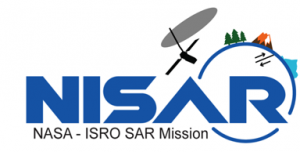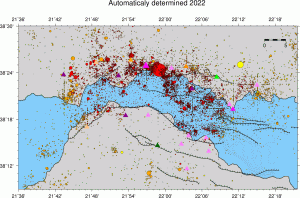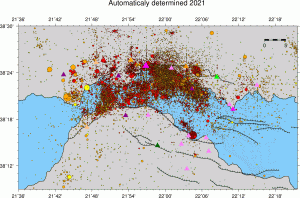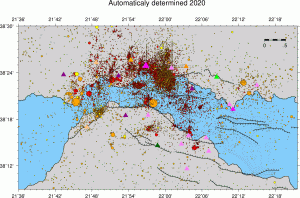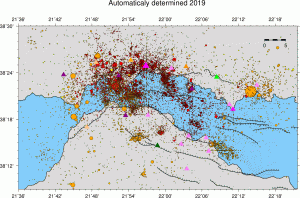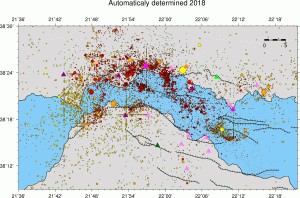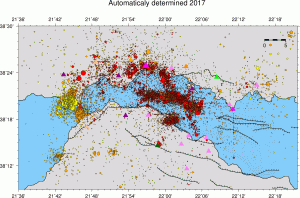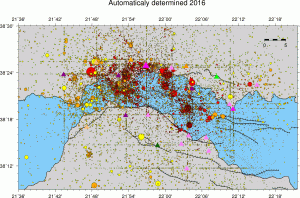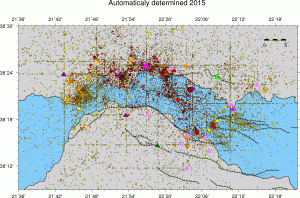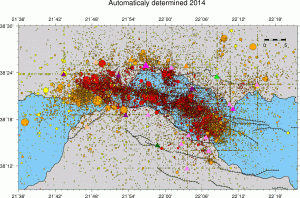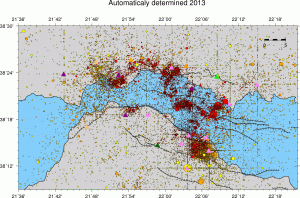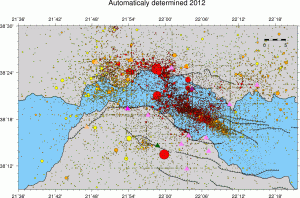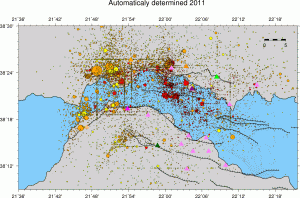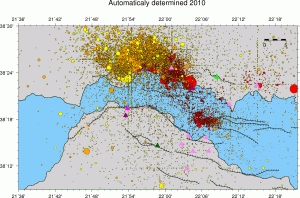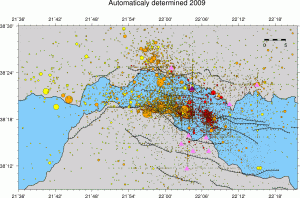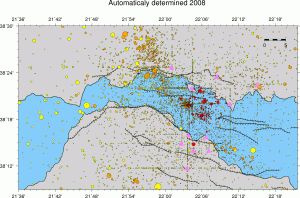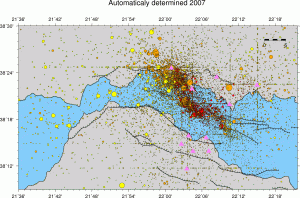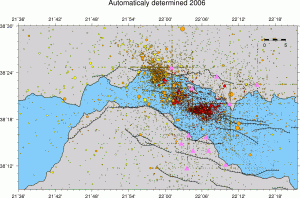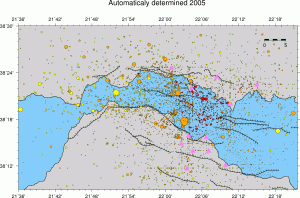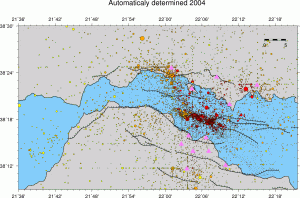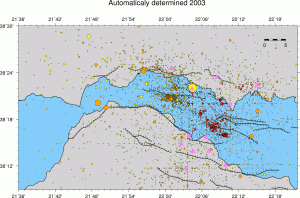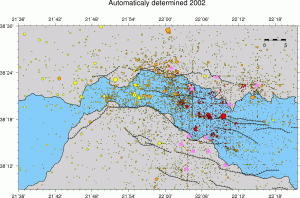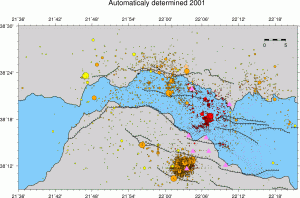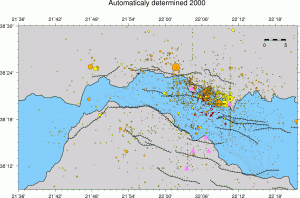West Hellenic Arc Tsunamis
A joint project ENS/PSL/UMR8538 – CEA/DASE in the framework of the Laboratoire Yves Rocard
Download the KML file
Download the PPT file
Collaborations
- MOSAIC consortium
- National Observatory of Athens
- CNES
- IGN
- Observatoire de Paris
- Université de la Rochelle
- Istituto Nazionale di Geofisica e Vulcanologia
Catalogs of events
- Catalog of tsunami events in the Mediterranean from 2000 BC to present (from the National Centres for Environmental Information (NOAA))
- Catalog of tsunami runups reported in Greece from 1610 BC to present (from the NOAA)
- Catalog of significant earthquakes in Greece from 1610 BC to present (from the NOAA)
- Eight significant volcanic eruptions at Santorini volcano since 1610 BC
See here details about the selected earthquakes
Twenty one selected tsunami
| Date | Cause | M | Area | Lat | Lon |
| Jun -426 | Earthquake | 7.1 | Corinth-Patras gulfs | 38.9 | 22.7 |
| -373 | Earthquake & landslide | 7.3 | Corinth-Patras gulfs | 38.25 | 22.25 |
| 21/7/365 | Earthquake | 8.0 | Crete | 35 | 23 |
| Apr 551 | Earthquake & landslide | 7.1 | Etolia | 38.4 | 22.3 |
| 5/5/1622 | Earthquake | 6.6 | Zakynthos | 37.6 | 21.0 |
| 5 Nov 1633 | Earthquake | 6.9 | Zakynthos | 37.6 | 21 |
| 14/5/1748 | Earthquake | 6.8 | Corinth-Patras gulfs | 38.3 | 22.1 |
| 29/12/1820 | Earthquake | 6.9 | Zakynthos | 37.75 | 21.25 |
| 6/1/1821 | Earthquake | 6.5 | Ionian sea | 37.8 | 21.3 |
| 26/12/1861 | Earthquake | 7.3 | Corinth Guf | 38.2 | 22.2 |
| 20/9/1867 | Earthquake | 7.1 | Peloponnesus | 36.4 | 22.2 |
| 22/4/1928 | Earthquake | 6.0 | Corinth gulf | 38. | 23. |
| 22/4/1948 | Earthquake | 6.5 | Ionian sea | 38.532 | 20.427 |
| 7/2/1963 | Landslide | Corinth gulf | 38.31 | 22.02 | |
| 6/7/1965 | Earthquake | 6.3 | Corinth gulf | 38.267 | 22.300 |
| 12/8/1953 | Earthquake | 7.2 | Cephalonia | 38.30 | 20.8 |
| 9/7/1956 | Earthquake | ~7.5 | Amorgos | 36.64 | 25.78 |
| 24/2/1981 | Earthquake | 6.7 | East Corinth gulf | 38.222 | 22.934 |
| 21/2/1984 | Earthquake | 5.4 | Gorinth gulf | 38.396 | 22.094 |
| 15/6/1995 | Earthquake & landslide | 6.5 | Centre Corinth gulf | 38.401 | 22.283 |
| 14 Feb 2008 | Earthquake | 6.9 | Methoni | 37.522 | 21.719 |
| 1/7/2009 | Earthquake | 6.4 | Crete | 34.164 | 25.471 |
| 17/11/2015 | Earthquake & landslide | 6.4 | Lefkada | 38.67 | 20.6 |
| 25/10/2018 | Earthquake | 6.8 | Zakynthos | 37.506 | 20.563 |
| 3/5/2020 | Earthquake | 6.6 | South Crete | 34.10 | 25.70 |
| 30/10/2020 | Earthquake | 7.0 | Samos island | 37.82 | 26.72 |


